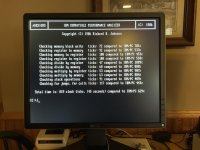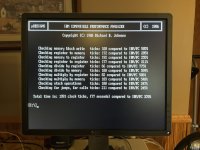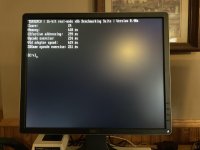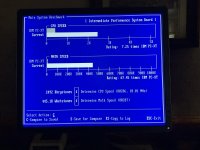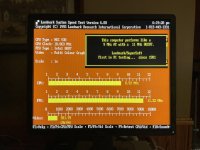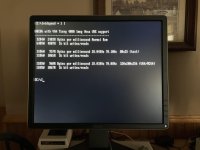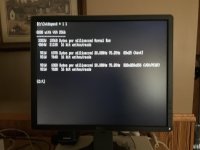jasa1063
Experienced Member
I currently have my Tandy 1000 TL/3 and Epson Equity Ie computers right next to each. This got me thinking that these computers are very similar. They are both 10MHz XT class computers with 4 8-bit ISA slots, 640K 0 wait state memory with a 16-bit data path. The Tandy 1000 TL/3 currently has an ET4000 ISA video card in it which allows me to test the 320x200x256 color mode against the MCGA adapter in the Epson Equity Ie. I upgraded the Epson Equity Ie with an NEC V30 CPU. Given all that, I wanted to run some benchmarks to see how well the NEC V30 goes up against a 286 at the same clock speed under similarly configured computers. I am going to do separate posts each with it's own benchmark results. From left to right will be the Tandy 1000 TL/3 and Epson Equity 1e
First up Speed. This is mid 80s benchmark I like to use on XT class computers. It has a pretty good mixture of tests.
First up Speed. This is mid 80s benchmark I like to use on XT class computers. It has a pretty good mixture of tests.

